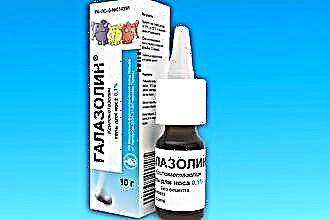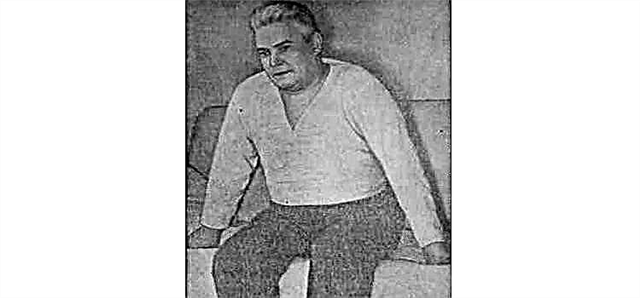Sometimes you notice that a sore throat appears, would touch, from scratch. It seems that I did not freeze and did not drink cold water, but my throat still bothers me. This may indicate the onset of an inflammatory process caused by infectious pathogens or unfavorable environmental factors. The symptoms of pharyngitis are not difficult to recognize, because a tickling and sore throat is familiar to everyone.
 There are many reasons for the development of pharyngitis, we will dwell on only a few. All causes can be divided into infectious and non-infectious. Infectious agents include:
There are many reasons for the development of pharyngitis, we will dwell on only a few. All causes can be divided into infectious and non-infectious. Infectious agents include:
- viral agents such as adeno-, enterovirus, influenza and parainfluenza. Often, against the background of a sore throat, other signs of SARS appear, for example, a runny nose, body aches and low-grade fever. Hyperthermia with a viral infection can reach 39 degrees, but it lasts no longer than 2 days, gradually decreasing;
- bacteria (streptococcus, staphylococcus), which provoke the appearance of inflammation with severe intoxication. The high temperature persists for 5-7 days, and purulent discharge may also appear, for example, on the back of the pharynx or in the nasal cavities. In this case, it is necessary to distinguish pharyngitis from sore throat in order to correctly compose the treatment and provide for the appearance of possible complications;
- a fungal infection is normally present in the oropharynx, but it belongs to conditionally pathogenic flora and does not cause disease. After the influence of a provoking factor, which leads to a decrease in immunity, the fungi are activated and begin to multiply intensively. In most cases, during the study, candida fungi are found, however, mold damage is not excluded.
As for the non-infectious group of causes, here we focus on:
- the allergic nature of the origin of sore throat. After contact with the "provocateur", the body's immune system reacts to him in the form of an allergic reaction. Allergens include animal hair, fluff, perfumes, household chemicals, personal hygiene products, food and medicines;
- unfavorable living conditions, which implies inhalation of dry air contaminated with industrial waste, dust and hypothermia;
- smoking experience;
- occupational hazards. This applies to work in which chronic diseases of the respiratory tract develop;
- prolonged deep breathing of cold air, for example, when running or doing hard work in the cold;
- trauma to the mucous membrane of the oropharynx (foreign body, solid food);
- chronic infections in the oropharynx or paranasal sinuses;
- violation of nasal breathing;
- concomitant pathology of the endocrinological or digestive system.
Signs of pharyngitis in adults can appear as a manifestation of a primary infection or be a consequence of the spread of inflammation from the nasopharynx or larynx. When cold air is inhaled, a spasm of blood vessels in the respiratory tract occurs, which reduces local protection and predisposes to infection or activation of opportunistic flora.
Infectious pharyngitis
If a sore throat or soreness when swallowing appears against the background of rhinorrhea, a viral infection should be suspected. Symptomatically, it manifests itself as aching joints, muscle pain, signs of conjunctivitis (tearing, itching, redness of the eyes), and fever.
The severity of hyperthermia depends on the type of virus and the body's immune defense.
On examination of the oropharynx, edematous, reddened lateral ridges are visualized, which indicates limited inflammation. When mucosal infiltration is observed on the posterior pharyngeal wall, pharyngitis should be considered as a common sore throat. Mucus can accumulate on the mucous membrane, and when probing the regional lymph nodes, their sensitivity and increased size are noted.
Pharyngitis symptoms are presented:
- sore throat. The person notices the desire to constantly cough up;
- soreness when swallowing;
- discomfort in the throat;
- malaise;
- fever;
- dry cough, or rather cough;
- decreased appetite.
 Symptoms can increase gradually or increase rapidly in intensity, leading to complications. Often, the undesirable effects of pharyngitis develop against the background of bacterial inflammation. In this case, a sore throat may appear without a runny nose, but with severe hyperthermia.
Symptoms can increase gradually or increase rapidly in intensity, leading to complications. Often, the undesirable effects of pharyngitis develop against the background of bacterial inflammation. In this case, a sore throat may appear without a runny nose, but with severe hyperthermia.
Separately, it should be said about herpetic pharyngitis, when bubbles with serous contents are detected on the posterior pharyngeal wall. After self-opening, small ulcerative defects remain, which heal within two weeks.
As for fungal inflammation, that is, pharyngomycosis, its prevalence is increasing every year. At the moment, about 40% of pharyngitis is due to pharyngomycosis. Isolated disease rarely occurs, in most cases it is combined with fungal infection of the tongue and gums.
About 90% of cases of the disease are caused by the intensive multiplication of candida fungi, which belong to the opportunistic flora of the oropharynx. Rarely, molds are the cause of pathology.
A provoking factor for the activation of fungi can be:
- congenital immunodeficiency;
- severe endocrine diseases (diabetes, hypothyroidism, obesity);
- infections (tuberculosis, HIV);
- unreasonable long-term use of antibiotics in large doses;
- a course of cytostatics and hormonal drugs;
- wearing dentures.
When the mucous membrane is affected by fungi, inflammation develops at the site of introduction. The causative agent, having penetrated the bloodstream, spreads throughout the body, provoking the development of intoxication and infection of internal organs.
Due to unexpressed symptoms in the acute stage, pathology often becomes chronic.
The course of the disease is possible in several forms, the differences of which are in the picture with pharyngoscopy:
- pseudomembranous appearance, in which plaques of a whitish or yellow tint with a curdled consistency are found on the surface of the mucous membrane. They can be easily removed, but sometimes a bleeding surface may remain;
- erythematous, when zones of hyperemia with a varnished surface are visualized on the posterior pharyngeal wall;
- the hyperplastic form is characterized by the formation of white spots on the mucous membrane, as well as plaques that are difficult to remove from the mucous membrane;
- the erosive-ulcerative type is characterized by the appearance of superficial ulcerations and erosive defects that can bleed. The person notices an admixture of blood in the saliva.
The acute form is characterized by pronounced symptoms, while the chronic form during the period of remission proceeds latently with frequent exacerbations throughout the year. The person is worried about dryness, burning sensations, scratching and soreness when swallowing. Pain can spread to the ear, jaw, and neck.
In addition, malaise, rapid fatigue, headache, and irritability are noted. Usually the temperature does not rise, however, the appearance of subfebrile condition is possible.
Non-infectious pharyngitis
If we consider non-infectious pharyngitis, its symptoms are not so dangerous in comparison with the infectious species. Among the clinical signs, there is perspiration, soreness and slight soreness when swallowing. They may appear several hours after drinking a cold drink or contact with an allergen.
In the case of an allergic reaction, in addition to soreness in the oropharynx, a person notices the appearance of a dry cough, shortness of breath, skin rashes, nausea or vomiting.
 Lacrimation, itching of the eyes and conjunctival hyperemia are also possible.
Lacrimation, itching of the eyes and conjunctival hyperemia are also possible.
The tactics of treatment for non-infectious pharyngitis is to eliminate the provoking factor:
- in case of allergies - prevention of contact with an allergic "provocateur";
- in case of development of professional bronchitis or pharyngitis, a change of job or the use of protective equipment is required;
- if chronic sore throat is caused by prolonged smoking, the question of stopping smoking is raised;
- if the environment is unfavorable, it is necessary to periodically travel to places with clean air (mountainous, forest area) or change the place of residence.
Chronic pharyngitis
The emergence of a chronic focus of inflammation in the oropharynx is due to improper treatment of the acute process. Without eliminating the infection or other provoking factor, inflammation in the pharynx is constantly maintained, but it manifests itself in less pronounced signs.
There are several forms of the course of the disease:
- the hypertrophic form is characterized by thickening of the throat mucosa and its compaction. The main sign of hypertrophy is visualization of full-blooded dilated blood vessels through the hypertrophied mucosa. Lymphoid formations undergo hyperplasia, hypersecretion is noted. Pathological foci are recorded on the posterior pharyngeal wall and lateral ridges;
- the atrophic form is manifested by thinning of the mucous membrane, its dryness and a decrease in the glands;
- the catarrhal type is characterized by diffuse hyperemia of the mucous membrane, its infiltration and looseness.
Symptomatically, the chronic form does not differ from the acute phase, but it has less pronounced symptoms. The person notices a sore throat, dry throat, and a slight coughing. As soon as a person's immunity weakens somewhat, pharyngitis exacerbates, manifesting itself as typical symptoms of the acute period.
Improper treatment of acute pharyngitis or its absence leads to the formation of an abscess in the glands or retropharyngeal tissue, the development of laryngitis, sinusitis, eustachitis and otitis media. If the disease is caused by the activation of streptococci, the risk of glomerulonephritis and rheumatism increases. These complications are not so rare in infectious pharyngitis, so you should not neglect the treatment and let the process take its course.



